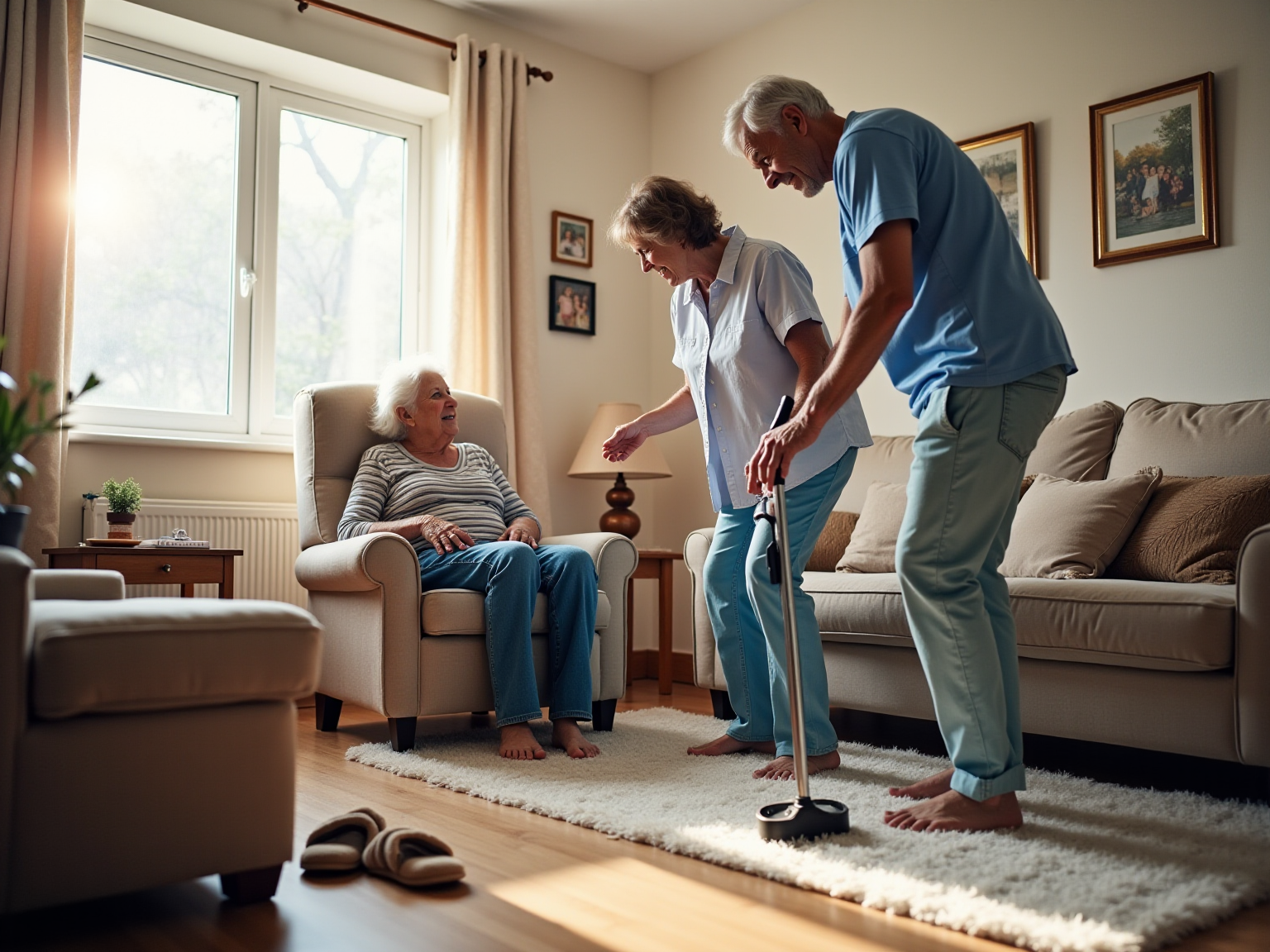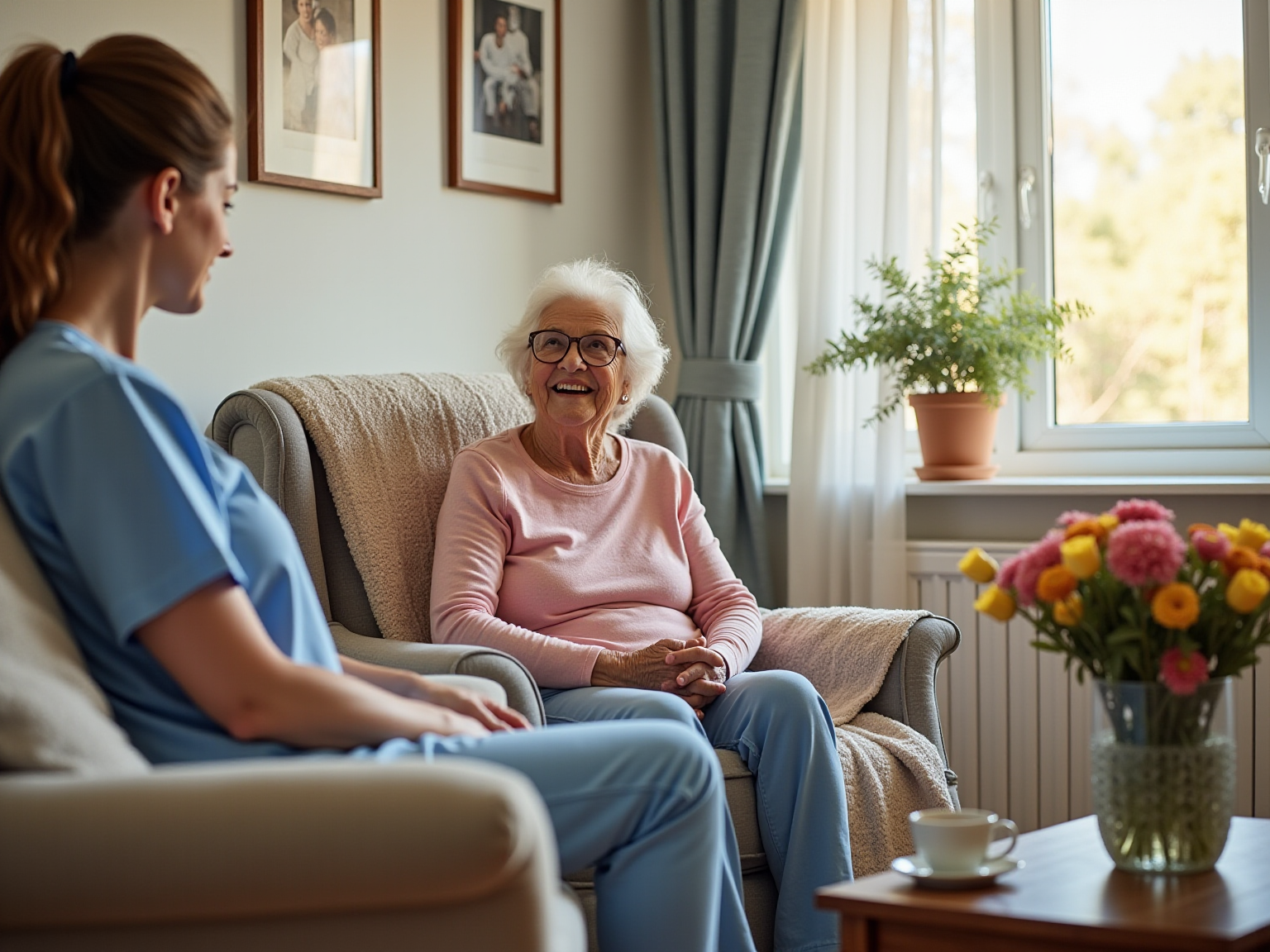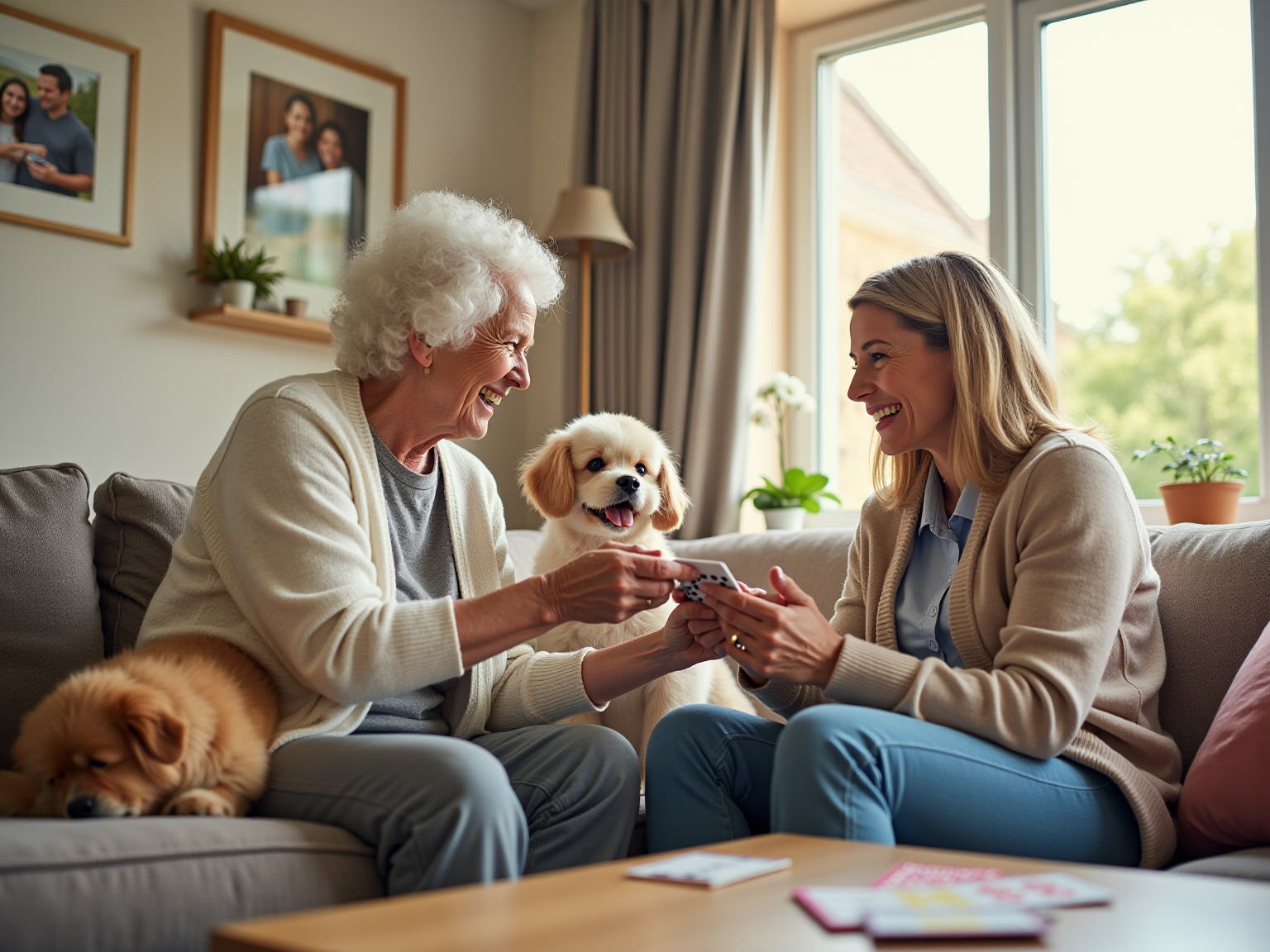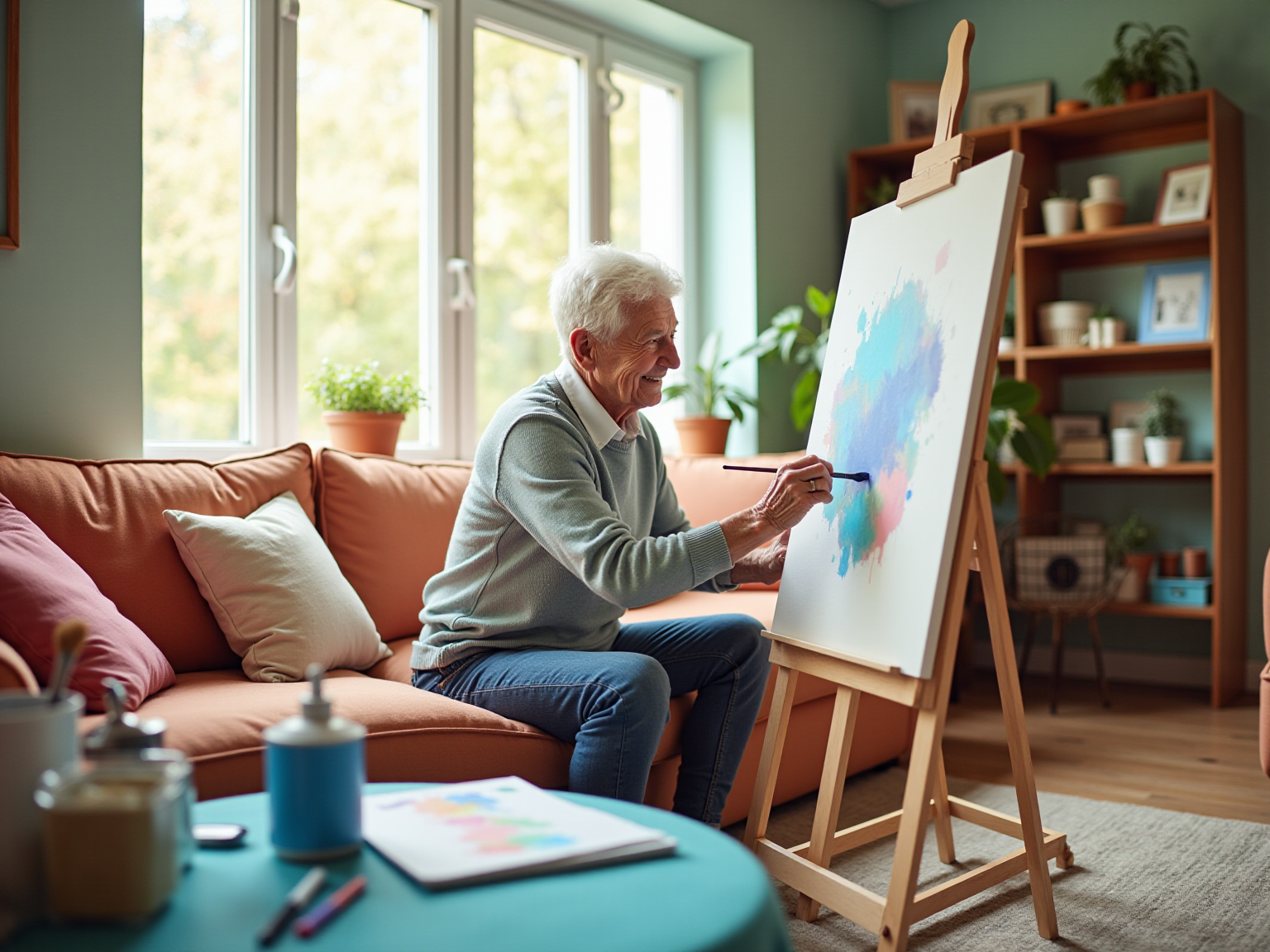Overview
This article highlights the crucial importance of recognizing three key signs of fall risk for senior caregivers. By understanding these signs, we can play a vital role in preventing falls among our elderly loved ones. The signs identified include:
- An unsteady gait
- Weakness or fatigue
- Environmental hazards
Research shows that these factors significantly increase the likelihood of falls, which is why it’s essential for caregivers to be proactive in ensuring safety at home.
In addition, being aware of these indicators allows caregivers to take necessary precautions and conduct home safety evaluations. It’s about fostering a safe environment that prioritizes the well-being of seniors. Remember, your vigilance can make a significant difference in their lives. Together, we can create a supportive atmosphere that reduces fall risks and enhances comfort for our elderly community.
Introduction
In a world where aging populations face increasing vulnerabilities, the significance of fall prevention in caregiving is paramount. Falls are not simply accidents; they can lead to serious injuries, loss of independence, and even fatalities among our seniors. Caregivers hold a vital role in creating a safe environment, making fall awareness an essential priority.
With concerning statistics revealing that one in four older adults experiences a fall each year, the need for proactive measures is evident. By recognizing the key signs of fall risk and implementing effective prevention strategies, caregivers can profoundly impact their clients’ safety and well-being.
As conversations around fall prevention gain momentum—especially during National Falls Prevention Awareness Week—it becomes crucial for caregivers to engage in open dialogues. Tailoring approaches to meet individual needs not only enhances safety but also fosters a sense of trust and support. We’re here for you, and your comfort is our priority.
Recognize the Importance of Fall Awareness in Caregiving
Falls pose a significant threat to seniors, often resulting in severe injuries, diminished independence, and even fatalities, highlighting the signs of fall. As caregivers, it’s essential to prioritize awareness of hazards to ensure a safe living environment for those we care for. Home health care stands out as a less expensive, more convenient, and just as effective alternative to hospital or nursing facility care, making it an ideal solution for families concerned about their loved ones’ safety. Did you know that roughly one in four senior individuals shows signs of fall by encountering a tumble each year? This statistic underscores the urgent need for caregivers to implement preventive measures to address signs of fall. Engaging in open dialogues with seniors about their fears and past experiences related to falling can empower us to identify signs of fall and address potential hazards proactively.
The introduction of the SAFE Act reflects a growing recognition of the necessity for comprehensive risk management among older adults. Furthermore, National Falls Prevention Awareness Week, celebrated each September, serves as a vital platform to enhance awareness of the signs of fall and offer practical solutions for accident prevention. During this week, caregivers can take actionable steps, such as organizing safety evaluations and injury prevention workshops, to enhance their clients’ safety.
Expert insights emphasize that prevalent signs of fall include reduced strength, gait, and balance. As Mariana Wingood observed, “The most prevalent risk elements for tumbles were reduced strength, gait and balance,” highlighting the necessity for caregivers to supervise these factors closely. A study on hip fracture-related emergency department visits revealed that accidents were responsible for almost all such incidents, especially among individuals aged 85 and older, highlighting the importance of recognizing signs of fall. In 2019, accidents led to a substantial number of emergency department visits and fatalities, emphasizing the essential requirement for preventive strategies in primary care environments to address the signs of fall.
Effective injury prevention initiatives in home health care concentrate on customized approaches that meet individual requirements, ensuring that seniors receive the assistance needed to uphold their safety and independence. It’s crucial to acknowledge that 29% of costs related to falls, which can be seen as signs of fall incidents, are covered privately or out-of-pocket by elderly individuals and families, highlighting the financial consequences of such incidents. By emphasizing signs of fall and exploring home health care alternatives, such as those provided by Best Care Nurses Registry, we can significantly decrease the likelihood of tumbles, ultimately improving the quality of life for our clients. For more information on how we can assist you, please call (888) 203-2529 to schedule a consultation.
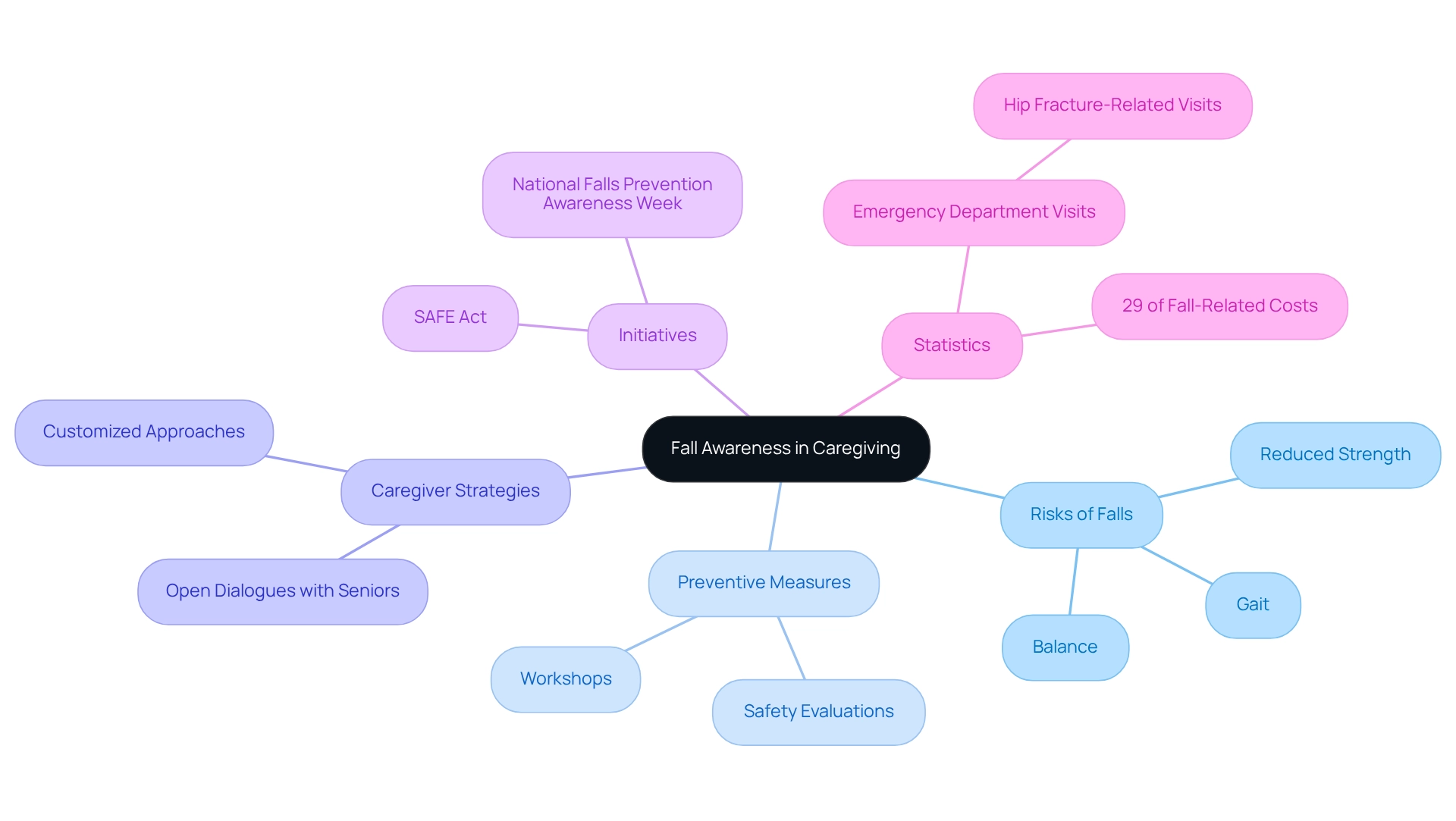
Identify Key Signs of Fall Risk in Seniors
As caregivers, it’s essential to remain vigilant in observing the key signs of fall risk among seniors. Recognizing these indicators can make a significant difference in ensuring their safety and well-being.
- Unsteady Gait: Changes in walking patterns, such as shuffling or difficulty maintaining balance, are critical indicators. Research indicates that an unsteady gait greatly raises the chances of accidents, with studies suggesting that nearly 50% of elderly individuals with gait abnormalities encounter incidents each year. Have you noticed any changes in your loved one’s walking?
- Weakness or Fatigue: Increased tiredness or difficulty in performing daily activities can signal underlying health issues. Elderly individuals showing these symptoms may be at an increased possibility of stumbling, as exhaustion can hinder coordination and strength. It’s important to check in with them regularly.
- Environmental Hazards: Identifying potential tripping hazards in the home is crucial. Loose rugs, clutter, and inadequate lighting can create unsafe conditions. The CDC highlights that a secure home setting is essential for preventing tumbles, advising regular evaluations to remove hazards. Have you taken a moment to assess their living space?
- Medication Side Effects: Being aware of medications that may cause dizziness or drowsiness is essential. These side effects can increase the likelihood of falls, so discussing medication management with healthcare experts can assist in reducing these dangers. We’re here to help navigate these conversations.
- Vision Changes: Monitoring for signs of declining eyesight is vital, as impaired vision can greatly affect balance and spatial awareness. Regular eye examinations can help detect issues early, allowing for timely interventions. It’s never too late to prioritize their vision health.
Furthermore, it’s crucial to acknowledge that individuals with low bone quality from osteoporosis or osteopenia encounter a considerably heightened likelihood of falling and fracturing bones. By recognizing the signs of fall, caregivers can implement preventive actions to minimize hazards and improve the safety of seniors.
Consider requesting support for everyday tasks through tailored care options from Best Care Nurses Registry. This can greatly reduce the likelihood of accidents, enabling individuals to preserve their independence while lessening potential dangers. As the CDC states, “Regardless of what you choose, the key is to get moving and stay active.” Caregivers can also consult the CDC’s My Mobility Plan, which features a checklist for evaluating personal and home safety concerning accidents, offering additional advice on establishing a safer environment. Remember, your comfort is our priority, and together we can create a safer space for your loved ones.
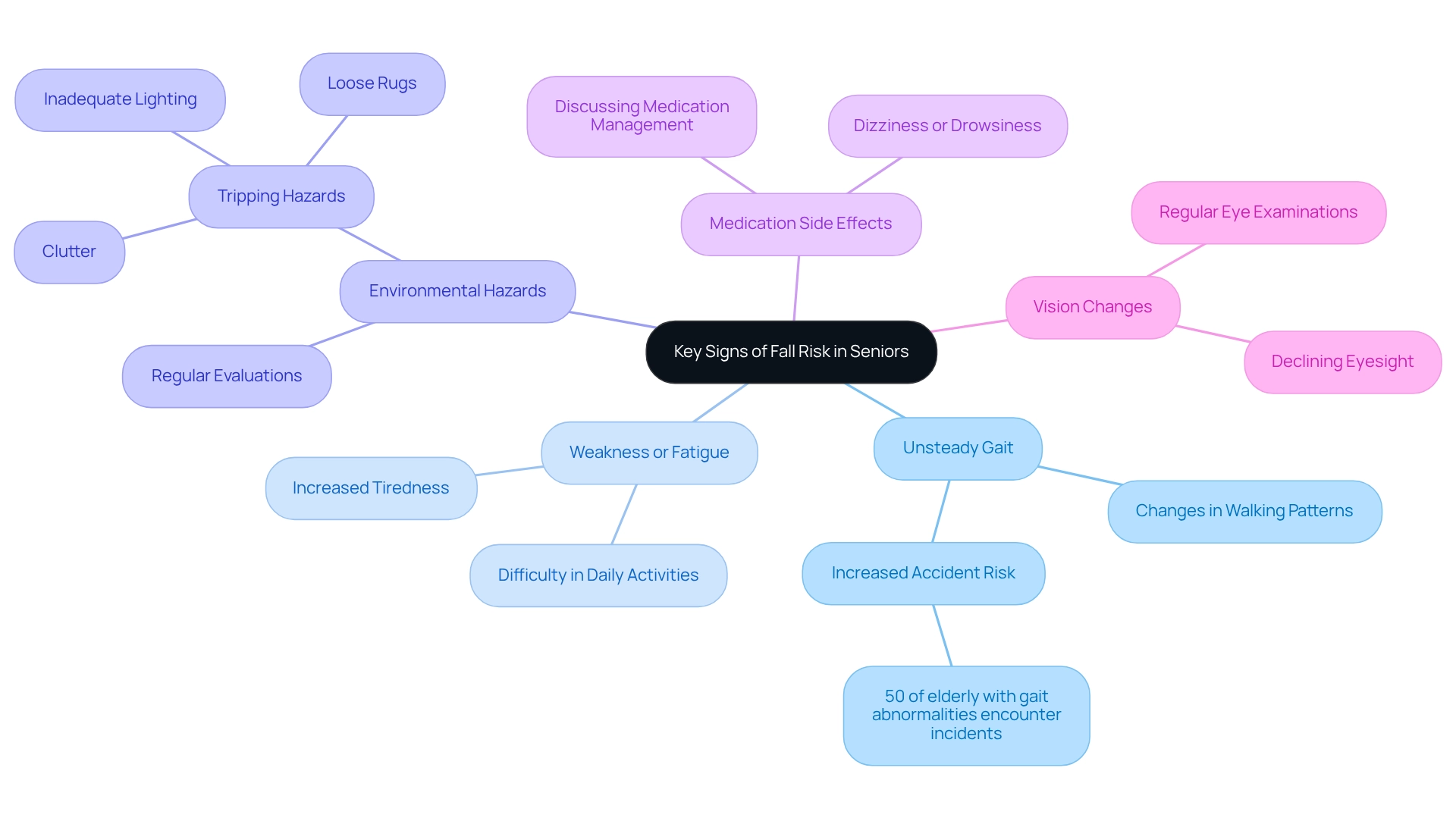
Implement Effective Fall Prevention Strategies
To successfully avert accidents among the elderly, caregivers can employ various essential strategies that prioritize safety and well-being.
Home Modifications: Establishing a secure living space is vital. This includes removing tripping hazards, installing grab bars in bathrooms, and ensuring adequate lighting throughout the home. Research shows that such changes can greatly decrease trip incidents, which are key signs of fall and the primary cause of injury for adults aged 65 and above. In fact, over 14 million elderly individuals report trips each year in the U.S.
Regular Exercise: Encouraging elderly individuals to engage in balance and strength training exercises can significantly lessen trip risk. Activities like Tai Chi have been shown to improve stability and coordination, making them particularly beneficial for older adults. Have you considered how a simple class could enhance their balance and confidence?
Medication Review: Regular consultations with healthcare providers to review medications are essential. Modifying dosages that may lead to dizziness or instability can help reduce risks of tumbling. This proactive approach can make a significant difference in their daily lives, particularly by addressing signs of fall; assistive devices such as canes, walkers, or other supportive tools can improve mobility and stability, offering older adults the assistance they require to move through their surroundings safely. These devices are not just tools; they are pathways to independence.
Routine Check-ups: Arranging regular health examinations enables the observation of any alterations in health condition that might influence balance and mobility. This proactive method is essential in tackling potential problems before they result in accidents. After all, a little prevention goes a long way by recognizing the signs of fall. By embracing these strategies, caregivers can cultivate a safer environment that reduces the likelihood of accidents, thus encouraging independence and improving the quality of life for seniors. As the age-adjusted decline death rate has risen by 41% from 2012 to 2021, implementing these measures is more essential than ever in protecting the welfare of senior adults. Moreover, it is significant to mention that sixty-seven percent of costs related to falls are covered by Medicare, emphasizing the financial strain accidents can place on elderly individuals and their families, while community programs can help identify and reduce the signs of fall among seniors. With Falls Prevention Awareness Week scheduled for September 22-26, 2025, caregivers are reminded to prioritize fall prevention efforts. Remember, we’re here for you, and your comfort is our priority.
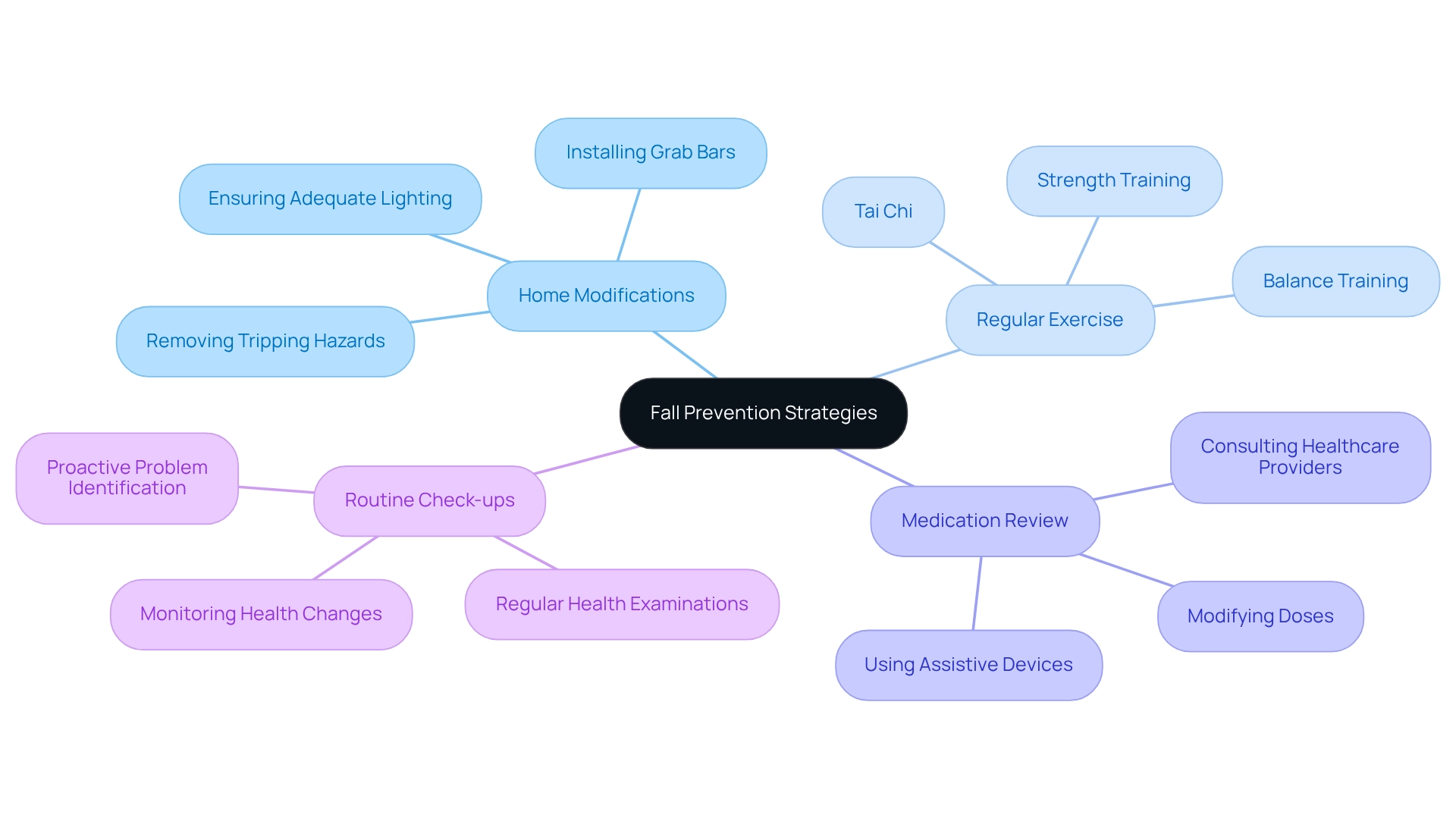
Conclusion
Falls among seniors represent a pressing concern that requires our immediate attention as caregivers. It’s vital to recognize the critical signs of fall risk—unsteady gait, weakness, environmental hazards, medication side effects, and vision changes. By understanding these indicators, we can proactively create a safer environment and provide the necessary support to uphold the independence and well-being of our older adults.
Implementing effective strategies, such as:
- Home modifications
- Regular exercise
- Medication reviews
- The use of assistive devices
- Routine health check-ups
can significantly reduce the likelihood of falls. These measures not only enhance safety but also improve the overall quality of life for seniors, allowing them to engage in their daily activities with confidence.
As awareness around fall prevention grows, particularly during initiatives like National Falls Prevention Awareness Week, the message for caregivers is clear. Prioritizing fall prevention goes beyond merely reducing accidents; it’s about fostering an environment filled with trust, support, and dignity for seniors. By making fall awareness a cornerstone of our caregiving approach, we can profoundly impact the lives of those we serve, leading to healthier, safer, and more independent living for older adults.
Frequently Asked Questions
What risks do falls pose to seniors?
Falls pose a significant threat to seniors, often resulting in severe injuries, diminished independence, and even fatalities.
Why is it important for caregivers to be aware of fall hazards?
Caregivers must prioritize awareness of hazards to ensure a safe living environment for the seniors they care for, helping to prevent falls and related injuries.
How common are falls among seniors?
Approximately one in four senior individuals experiences a fall each year, highlighting the urgent need for preventive measures.
What is the SAFE Act and its significance?
The SAFE Act reflects a growing recognition of the necessity for comprehensive risk management among older adults, aimed at enhancing safety and reducing fall incidents.
When is National Falls Prevention Awareness Week, and why is it important?
National Falls Prevention Awareness Week is celebrated each September and serves as a vital platform to enhance awareness of fall signs and offer practical solutions for accident prevention.
What are some actions caregivers can take during Falls Prevention Awareness Week?
Caregivers can organize safety evaluations and injury prevention workshops to enhance their clients’ safety during this week.
What are common signs of fall among seniors?
Common signs of fall include reduced strength, gait, and balance, which caregivers should monitor closely.
What did the study on hip fracture-related emergency department visits reveal?
The study found that accidents were responsible for nearly all hip fracture-related emergency department visits, especially among individuals aged 85 and older.
How do falls impact the financial situation of seniors and their families?
About 29% of costs related to falls are covered privately or out-of-pocket by elderly individuals and families, highlighting the financial consequences of such incidents.
What is the focus of effective injury prevention initiatives in home health care?
Effective injury prevention initiatives in home health care concentrate on customized approaches that meet individual requirements, ensuring seniors receive the assistance needed to maintain their safety and independence.

